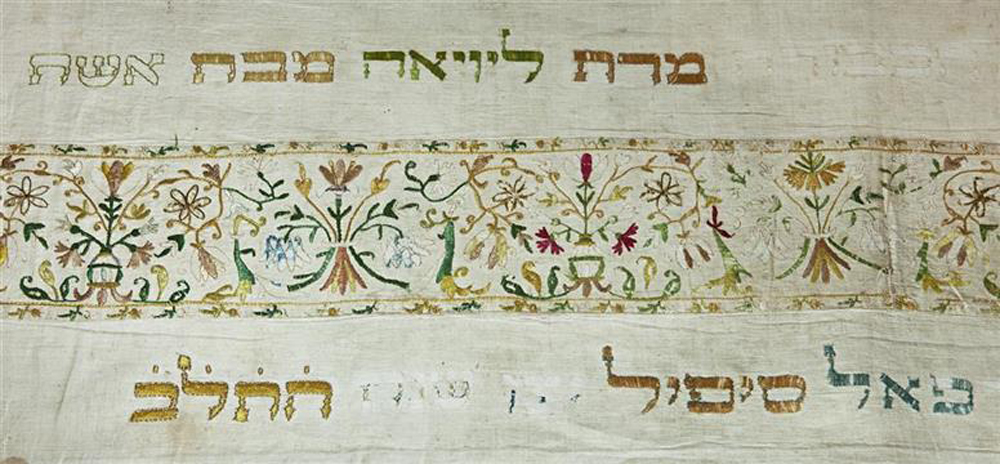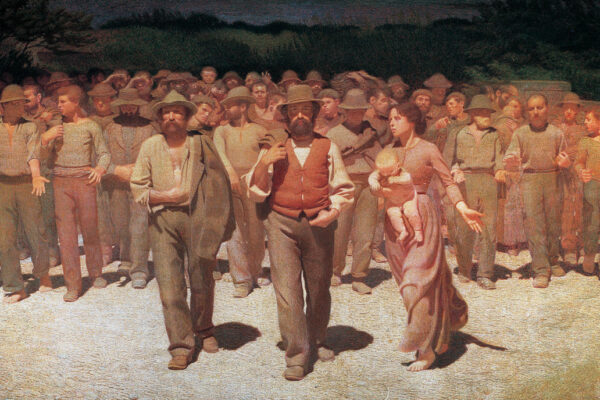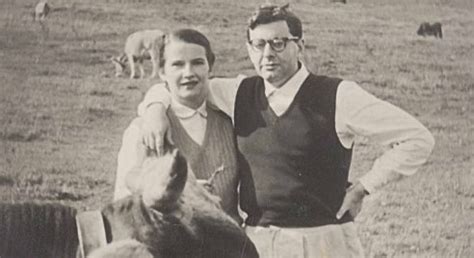In Italy, a Unique Connection Between Women and the Torah. Creating special Torah coverings—often from discarded scraps of fabric—has a long history for Italian women
A Torah scroll takes years to finish, is written on a special parchment made of animal skin, by a select few who learn the craft, and is locked away, safely, in a special closet when it’s not in use. It is celebrated: It gets kissed, danced with, stood up for, and is ornately decorated. There are endless stories of people risking their lives, even running into a burning building, to save a Torah scroll. There’s the rather daunting tradition of fasting for 40 days to atone for having dropped a Torah scroll.
For the women of Italy, though, the Torah scroll is not just a beloved ritual entity: It is a witness to their special role within their Jewish communities. In Italy, the women have traditionally held a deeply personal relationship to the Torah scroll—a rapport so unique, and so persistent, that there is a prayer said about this connection every Shabbat in Italy.
“He who blesses our matriarchs, Sarah, Rebecca, Rachel, and Leah, may He bless all the daughters of Israel to merit in creating a skirt or covering for the Torah scrolls, or set up candles in the synagogue for the glory of the Torah,” reads the prayer that is said on Saturday mornings in synagogues in Italy using the Italian liturgy, moments before the Torah scroll is placed back in the ark after the weekly portion reading. “May His Blessed Name return the favor and reward these righteous women; let us say, Amen.”
Putting a special prayer for women smack in the middle of services, and invoking the matriarchs of Judaism, is quite peculiar in Orthodox Jewish synagogue customs. Yet this prayer is said every week in Italy because the Torah skirts mentioned in this prayer tell the story of the history of Italian Jewry and the role of women in that society. These Torah skirts can be seen in synagogues all over Italy, as they are used every week, and inside the Jewish Museum of Rome, where Torah skirts that are hundreds of years old have been restored and are on display.
For Aliza Lavie, an Israeli academic and author of A Jewish Woman’s Prayer Book, the Torah skirts, and this prayer that is dedicated to them, are a reminder that women played an outsized role in Italian Jewry as far back as the Middle Ages. “The women were deeply involved in the community, which was very different from other parts of the world, where women were not given opportunities in the synagogue,” Lavie said. “This prayer is so unique because it is not typically the story of Jewish women. You can’t compare it to any other community.”
In 1958, Israeli historian and bibliographer Avraham Yaari published an extensive research project in Kiryat Sefer, the official research branch of the National Library of Jerusalem, on the mishebeirach prayer, the “He Who Blesses” prayer that is said in synagogues. Yaari found that the mishebeirach was not a part of the official prayer liturgy, with halakhic, or lawful implications, but developed differently, in communities all over the world, beginning in the seventh century. The Jews believed this prayer was exalted by the mystical powers of the Torah scrolls, and so sometime during the Middle Ages it was added to the liturgy of the Jews of Europe on Shabbat, to be said while the Torah scrolls were still out of the ark from the weekly portion reading.
Over time, Jewish communities got creative with the form. There was a mishebeirach for members of the community forced to take up jobs in unpaid labor; a mishebeirach for the people with the demanding job of being a tax collector; a mishebeirach for someone who was fasting voluntarily; and a mishebeirach for fertility. There was even a mishebeirach praising those who kept silent during services; even rabbis back then had a hard time limiting chatter during prayers. According to Yaari, some communities in Europe said a mishebeirach prayer for a congregation that suddenly disappeared from Budapest in 1942, now believed to have been deported to a Nazi labor camp.
“Over time, communities adopted this prayer category as their own and allowed it to express a specific purpose for their community,” said Rob Scheinberg, a professor of Jewish liturgy at the Jewish Theological Seminary. “This turned into a rich history of communities composing particular prayers to insert motivations of highly specific comments.”
No one knows for sure when the mishebeirach prayer for the women of Italy was written, but it can be found in the Mahzor Minhag Roma, the first prayer book that was printed in Italy—in 1486 by the Soncinos, an Italian Jewish family in the printing business. Its words—that the “daughters of Israel merit in creating a skirt or covering for the Torah scrolls”—bear witness to a time in history when Jews faced ongoing persecution. Up until Italy coalesced as a democratic nation-state in 1861, its Jewish citizens were segregated and persecuted under Catholic authorities. In cities like Venice, Turin, and Rome, Italian Jewish citizens were forced to live in ghettos, and all across the country, the Jews had career restrictions. Although in some cities, such as Venice, Jews were allowed to practice medicine, in most cities Jews were only allowed to work in money-lending and the buying and selling of old textiles.
Today, the coverings of the Italian Torah scrolls are reminders of that time. The “skirts,” as they are called, appear unlike any other Torah coverings around the world: They are made of materials woven from wool, silk, linen, and rayon, and decorated with large, baroque designs of floral and paisley. While Torah coverings of other Jewish traditions were created especially for the scrolls—in Ashkenazi communities, the coverings are typically made of velvet and have various traditional iconography woven on the front, and in Sephardic communities, scrolls are encased in round cases made of wood or silver, called a tik—the Jews of Italy were essentially swimming in yards of old, wilted fabrics. Italian Jewish women repurposed the rags as a lovely Torah scroll accessory.
“The women would take the old fabrics and sew in patches and enhance them with hand-embroidery,” explained Ursula Subatzus, registrar and senior guide at the Jewish Museum of Rome, which has some 900 old Italian textiles. “They did what they could with the old, precious garments, often creating illusions with the patches to make it appear as though the Torah skirts were one large piece of fabric. And the results are beautiful, intricate pieces of history.”
The Jewish Museum of Rome’s collection includes Torah skirts made of fabrics from all over the world. A Torah skirt from 1704 at the museum, for example, was made from old fabrics from Queen Christina of Sweden; the pattern of the Torah skirt has e family symbol of a crown scattered throughout. The museum even has a Torah skirt made from material with a colorful zigzag pattern, which Subatzus and her team believe inspired Italian fashion house Missoni’s infamous design.
In the Italian Jewish tradition, the craft of repurposing old textiles for Torah skirts evolved into such an honor, said Riccardo DiSegni, the chief rabbi of Rome, that eventually a mishebeirach was composed to bless all the Jewish women of Italy to merit in partaking in such a privilege. These days, the repurposing of old textiles for Torah skirts has become something of a lost art. But the Torah skirts are still used in synagogues all over Italy. The delicate skirts that were restored and are on display at the Jewish Museum of Rome go out to the synagogues of Rome only on High Holidays, but in the synagogues of cities like Turin and Venice, these Torah skirts made of old textiles are still in use.
***
Over the years, the special mishebeirach prayers composed by the various Jewish communities have come and gone. But the Italian mishebeirach prayer blessing the Jewish women to create a Torah skirt is unique, according to Ruth Langer, a professor at Boston College and expert on Jewish liturgy, “because this was scripted and is clearly a part of the congregation’s prayer services.” That it was officially added into the Italian Jewish liturgy and is still said every single week, when it concerns an extinct custom, shows that the craft—and its practitioners—were venerated and beloved.
The mishebeirach nods to how significant the Italian women’s presence and involvement in communal life at the synagogue was. As early as the 14th century, the women of the Italian Jewish community had a vibrant role in the synagogue. The women were not just bystanders but were actively involved in rituals. The Italian men held the main roles of prayer services, like reading from the Torah and leading the prayers, as according to Jewish tradition, but women took ownership of responsibilities that were lawfully permissible to them, said Alberto Somekh, a former chief rabbi of Turin.
“Italy has always followed the laws of Orthodox Jewry, and so women are not called up to the Torah, or lead services, as according to tradition,” Somekh explained. “But in other instances where halakha does allow participation, the women of Italy were far more involved than the women of other countries.”
Jobs like lighting candles, refilling supplies, upgrading textiles, and general upkeep within the synagogue were done by women, according to Somekh; this centrality is also apparent from the text of the mishebeirach, which blesses the Italian women to “set up candles in the synagogue for the glory of the Torah.” In some Italian synagogues, a secondary shawl, called a wimple, which is wrapped around the scrolls before it is covered by the Torah skirt, used to be folded by the women, although only a few congregations in Rome still have women continuing this practice.
This was an opportunity for the women to have a physical connection to the Torah scrolls, and, according to DiSegni, the wimple used to be passed around the women’s section of the synagogue to be kissed, but that tradition was put to a stop because “the shawls were getting stained with red lipstick.”
While the mishebeirach is unique in that it’s said every Shabbat in front of the entire congregation, Italy has a rich tradition of special women’s prayers, according to Nina Beth Cardin, a Conservative rabbi and author of Out of the Depths I Call to You: A Book of Prayers for the Married Jewish Woman. “There were special women’s prayers written for post-partum, for women assisting in labor, and prayers for children,” Cardin said.
Cardin notes that the Italian women’s prayers were not just about fulfilling the responsibilities of the upkeep of the synagogue—they prove that they were a constant presence at services. In many of these prayers, Cardin adds, the text often invokes a promise to return and take care of the synagogue. The text reads that if the woman will safely endure labor, for example, she would promise to “go and make the wicks of the candles, or go and polish the wood of the synagogue.”
Post-partum Italian Jewish women also had their own prayer when they eventually did return to synagogue, and these prayers are still said as the Torah scrolls are taken out of the ark on Shabbat. Unlike the Eastern European women’s prayers, called tehines, which were said at home, these prayers were written with the expectation that the woman saying it would be present at the synagogue. In some communities in Italy, Cardin adds, there was a tradition for a giant procession of women to accompany a new mother from her home back to the synagogue; the Italian rabbis eventually had to restrict the attendance of these processions to family members, after mobs of women were clogging the ghetto streets.
These prayers “symbolize just how important the synagogue was for these Italian Jewish women,” Cardin said. “They absolutely had a much more interrelated life with the male version of Jewish expression,” she says. “The Italian women had a much closer, integrated connection to liturgical, synagogue life than in the Germanic lands.”
These traditions of special prayers for Italian Jewish women are not about women’s liberation, DiSegni said. Rather, they symbolize the spiritual connection the women felt to their Judaism. Even while being surrounded by Christian neighbors, who forced them to live in segregation and limited their career opportunities, the Jews of Italy lived a life devoted to tradition. The women of the community took pleasure in the involvement, and these prayers, tied to the synagogue helped them connect to their faith.









